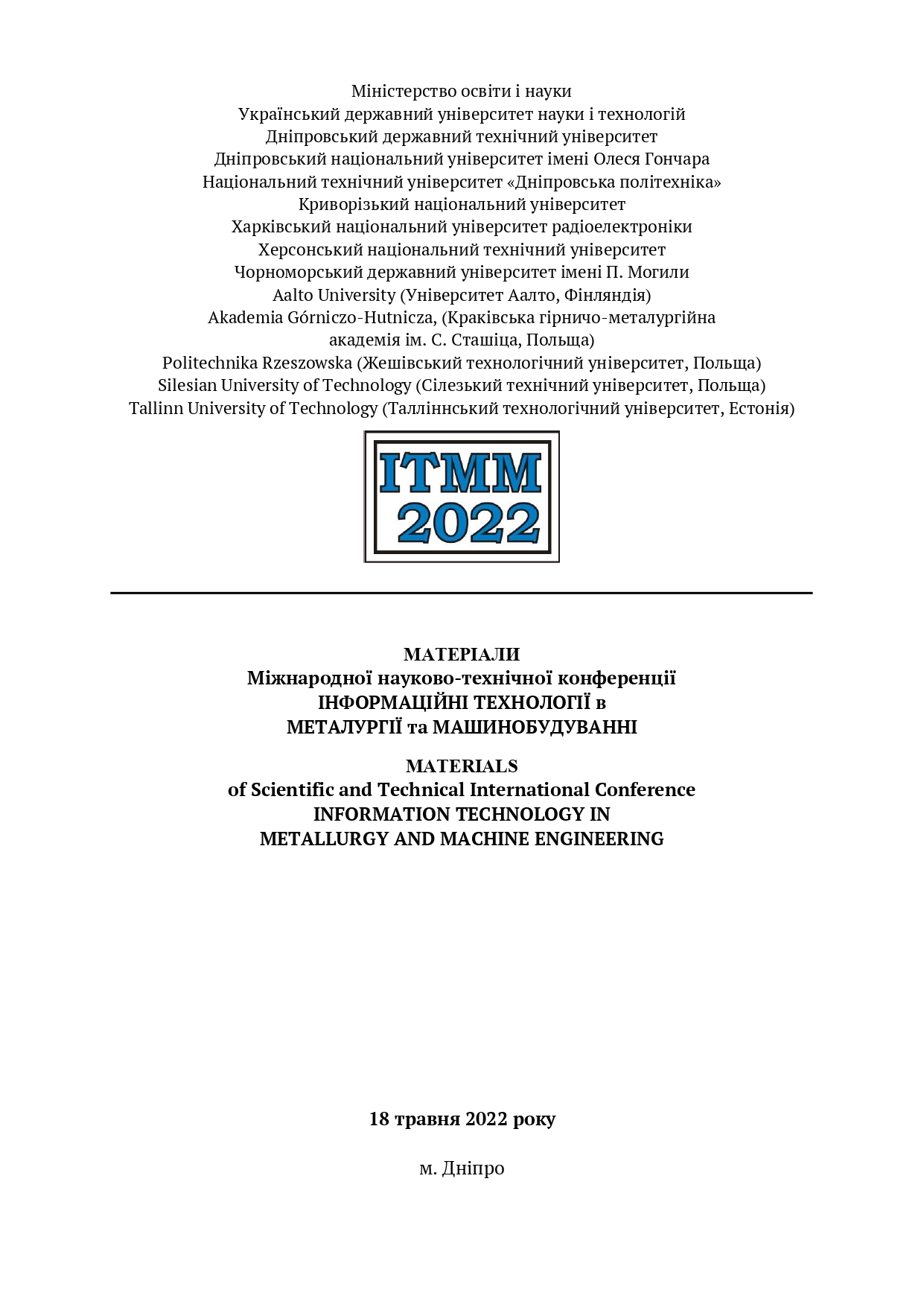ПРОГНОЗУВАННЯ МЕХАНІЧНИХ ВЛАСТИВОСТЕЙ СТАЛІ ЗА ДОПОМОГОЮ ШТУЧНИХ НЕЙРОННИХ МЕРЕЖ
DOI:
https://doi.org/10.34185/1991-7848.itmm.2022.01.014Ключові слова:
штучна нейронна мережа, конструкційні сталі, механічні властивості, хімічний складАнотація
Прогноз механічних властивостей є дуже важливим завданням у контролі якості сталі, яка є одним із найважливіших у світі інженерно-конструкційних матеріалів. До основних факторів, що впливають на механічні властивості сталі, відноситься термомеханічна обробка і хімічний склад. Хімічний склад може змінюватися для спеціальної високоміцної низьколегованої сталі, щоб відповідати певним вимогам до механічних властивостей. У цій роботі представлено підхід машинного навчання для прогнозування міцності на розрив в залежностi вiд хімiчного составу конструкційних сталей. На основі промислового набору даних була розроблена одношарова модель штучної нейронної мережі. Вхідними параметрами моделі були параметри міжатомної взаємодії, що характеризують хімічний і структурний стан розплаву. Результати моделювання показали, що модель зi штучними нейронними мережaми може бути корисним інструментом для прогнозування механічних властивостей сталі. Це також є потенціалoм для подальшої оптимізації хімічного складу для спеціальних критеріїв якості.
Посилання
Li, X., Li, F., Cui, Y., Xiao, B., & Wang, X. (2016). The effect of manganese content on mechanical properties of high titanium microalloyed steels. Materials Science and Engineering A-structural Materials Properties Microstructure and Processing, 677, 340-348.
Qingshen, M., Leqing, H., Guobiao, D., Yanfeng, W.A., Yongda, Y., & Changwen, M. (2017). Effect of microalloying elements on microstructure and properties of quenched and tempered constructional steel. IOP Conf. Series: Materials Science and Engineering 242, doi:10.1088/1757-899X/242/1/012036.
Kalashnikov, I.S., Shalkevich, A., Acselrad, O., & Pereira, L.C. (2000). Chemical composition optimization for austenitic steels of the Fe-Mn-Al-C system. Journal of Materials Engineering and Performance, 9, 597-602.
Tregubenko, G.N. (2017). Improvement of the properties of low-alloy constructional steels microalloyed with the nitrogen-titan-aluminum complex. (in Russian). Металлургическая и горнорудная промышленность (Metallurgical and mining industry), 1, p. 67 – 71.
Babachenko, O., Kononenko, H., Snigura, I., & Togobytska, N. (2021). Optimisation of chemical composition of high-strength structural steels for achieving mechanical property requirements. Paper presented at ESAFORM 2021. 24th International Conference on Material Forming, Liège, Belgique. doi: 10.25518/esaform21.3654
Carneiro, M., Salis, T.T., Almeida, G.M., & Braga, A.P. (2021). Prediction of Mechanical Properties of Steel Tubes Using a Machine Learning Approach. Journal of Materials Engineering and Performance, 30, 434-443.
Pattanayak, S., Dey, S., Chatterjee, S., Chowdhury, S.G., & Datta, S. (2015). Computational intelligence based designing of microalloyed pipeline steel. Computational Materials Science, 104, 60-68.
Haykin S. (2009). Neural Networks and Learning Machines; Number Bd. 10 in Neural Networks and Learning Machines; Prentice Hall: Hamilton, ON, Canada.
Gurney, K. (2018). An Introduction to Neural Networks; CRC Press: London, UK




